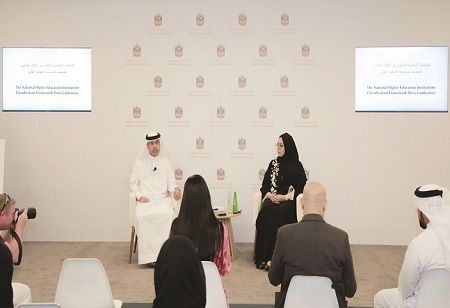The Ministry of Education (MoE) in the UAE continues to enhance higher education by launching the National Higher Education Institutions Classification Framework, officially endorsed by the UAE Cabinet. This framework will categorize MoE-licensed higher education institutions (HEIs) using transparent and equitable criteria that support the UAE's strategic vision and priorities.
Dr. Mohammad Al Mualla, Undersecretary for Higher Education Academic Affairs at the Ministry of Education, emphasized that the introduction of the National Higher Education Institutions Classification Framework marks a significant advancement in the Ministry's efforts to bolster the UAE's global standing in higher education. He highlighted that the framework empowers students to choose HEIs that match their academic strengths and interests while also motivating universities to enhance their competitiveness and attract international students worldwide. This is achieved through equitable, transparent, and objective evaluations.
His Excellency Dr. Al Mualla added, “Working on the development of the framework has spanned six years in collaboration with relevant entities. Ministry teams have conducted standard comparisons with internationally accredited university ranking systems. Communication with relevant local parties, including local HEIs, was prioritized to ensure alignment with the national vision and priorities. Additionally, the Ministry of Education coordinated with HEIs to complete two trial phases to ensure the framework’s flexibility, clarity, and neutrality of standards. Classifications will be updated annually, starting from this year”.
Following global best practices in higher education institution rankings, MoE-licensed HEIs in the UAE have been categorized into two groups. The first category, known as the Research Cluster, includes HEIs offering both undergraduate and postgraduate programs. The second category, the Non-research Cluster, comprises HEIs that exclusively offer bachelor’s (or lower) degree programs. It's important to note that the framework excludes HEIs established within the last five years, those solely offering master's and doctoral programs, and universities with revoked or suspended licenses.
Based on this classification, in the initial phase of the National Higher Education Institutions Classification Framework, HEIs were assessed across four primary pillars: research and innovation (35%), teaching quality and student life (35%), employment and labour market alignment (20%), and international collaboration (10%). The MoE will announce the assessment pillars for Non-research Cluster HEIs in Phase Two of the Programme. Based on the new Framework, MoE-licensed HEIs into four groups. Each group is defined through key performance indicators that fall under the pillars.
The MoE guarantees neutrality, fairness, and transparency in classifying HEIs by collecting data from diverse sources. This includes HEIs' own data, information from official entities within the country, reliable international bodies, as well as surveys from students, employees, employers, and alumni. The new Framework equips HEIs with clear tools to assess and potentially adjust their rankings. All data undergoes annual audits and reviews to ensure accuracy and reliability.

